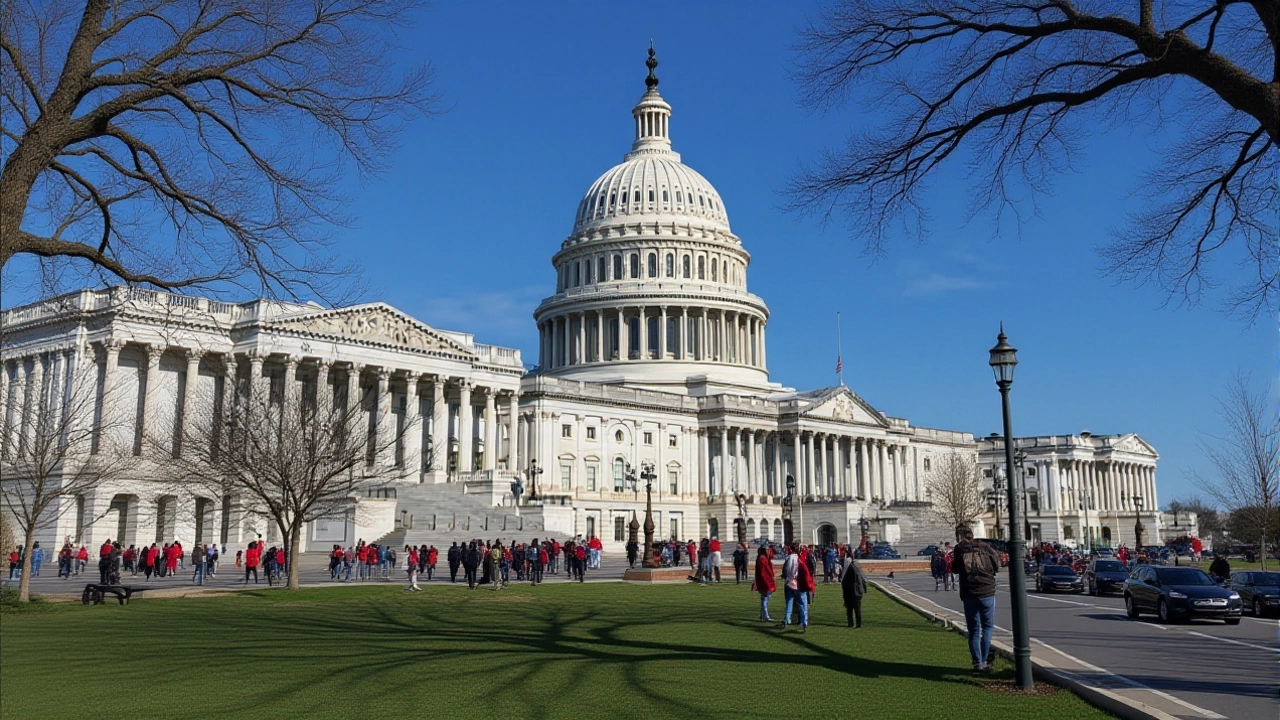When Donald J. Trump, the 45th President of the United States, called the Democrats’ tactics a “kamikaze attack,” the country learned that the government shutdown had just entered its sixth week.
On October 8, 2025, the Senate voted twice and fell short each time, leaving the federal government still closed after funding lapsed at midnight on September 30. The House‑passed continuing resolution was rejected 52‑42, and a Democratic alternative failed 45‑50, both well shy of the 60‑vote threshold needed to overcome procedural hurdles.
Why the Shutdown Keeps Stalling
The stalemate isn’t new. Republicans control both chambers and the White House, yet they lack enough votes to push a funding bill without at least some Democratic help. Mike Johnson, the Speaker of the House from Louisiana, has tried to rally his caucus around a short‑term bill that would keep agencies running while negotiations continue.
Meanwhile, Mitch McConnell, Senate Minority Leader from Kentucky, warned that any deal that includes new spending on health‑care subsidies could jeopardize GOP unity. The core of the disagreement? The Affordable Care Act’s premium‑tax credits, slated to expire on December 31, 2025, unless Congress extends them.
State‑level pressure is mounting, too. "If we let those credits lapse, 14.1 million Americans could see their premiums jump by hundreds, even thousands of dollars," warned Greg Stanton, Democrat from Arizona’s 4th district, during a press conference on the same day.
Senate Voting Drama on October 8
The afternoon session started at 1:16 PM EDT. John Fetterman, Democrat of Pennsylvania, surprised many by siding with Republicans on the House bill, citing concerns about a "blank‑check" approach to spending. Catherine Cortez Masto, Democrat of Nevada, also broke ranks, arguing the short‑term measure was the only realistic path to keeping essential services open.
Independent Angus King from Maine echoed that sentiment, noting that “the American people can’t afford another week of uncertainty.” In a twist, Republican Rand Paul joined most Democrats in opposing the House’s proposal, insisting any funding must include a clear roadmap for debt reduction.
By 4:22 PM, the Senate had adjourned without a deal. The vote tally left the House‑passed bill at 52‑42 and the Democratic alternative at 45‑50, both far from the 60‑vote supermajority required to invoke cloture.
Impact on Federal Workers and Services
At 4:22 PM the Internal Revenue Service announced furlough notices to 34,429 of its 74,299 employees – roughly 46.4 % of its workforce. "Most IRS operations are closed," the agency said, while retaining 39,870 staff for essential tasks like processing tax payments and keeping online systems secure.
The ripple effect reaches beyond the IRS. The Congressional Budget Office estimates that each week of shutdown shaves about $6.5 billion off the nation’s economic output. After six weeks, the cost approaches $39 billion, according to the latest CBO briefing.
Other departments feel the pinch, too. The Department of Homeland Security and the Department of Justice have managed to keep about 85 % of personnel on the clock, but the State Department and the Environmental Protection Agency have furloughed over 80 % of their staff, leaving visa processing and environmental monitoring in limbo.
Responses from Stakeholders
The American Hospital Association, headquartered in Washington, D.C., warned that lapsing ACA credits could push thousands of families into unaffordable coverage, potentially increasing uncompensated care costs for hospitals.
Health‑care providers are already bracing for a surge in patients who may delay treatment due to cost concerns. "We've seen a 12 % rise in emergency‑room visits when insurance lapses," said a spokesperson for a major hospital network, citing data from the first half of 2025.
Labor unions representing federal workers have filed lawsuits demanding back pay for furloughed employees. "Our members have bills to pay, and the government can’t keep playing political games," remarked a union official, who asked to remain anonymous.
What Lies Ahead
Congressional leaders say a flurry of activity is expected during the week of October 6‑10, but formal negotiations have yet to resume. Both parties claim they’re willing to sit down “in good faith,” yet the core issue – whether to extend ACA premium subsidies – remains a non‑negotiable for many Democrats.
Analysts at the Brookings Institution caution that a prolonged shutdown could erode public confidence in government institutions, especially if the budget deficit keeps swelling. "Every additional week not only costs money but also chips away at the social contract," noted senior fellow Sarah K. Miller.
In the meantime, everyday Americans are feeling the strain: federal parks are closed, some social‑security checks are delayed, and small‑business owners are scrambling to file taxes without IRS assistance.
Key Facts
- Shutdown began after September 30, 2025 funding lapse.
- Senate rejected two funding bills on October 8, 2025 (52‑42 and 45‑50).
- IRS furloughed 34,429 employees (46.4 % of staff).
- CBO estimates $6.5 billion lost per week; total cost ~ $39 billion.
- ACA premium‑tax credits set to expire Dec 31, 2025, affecting 14.1 million enrollees.
Frequently Asked Questions
How does the shutdown affect federal employees?
Around 2.2 million civilian workers are either furloughed or working without pay. Agencies like the IRS have announced nearly half their staff will be on unpaid leave, while critical functions such as border security remain largely intact.
What happens to tax returns during the shutdown?
The IRS will continue processing returns that have already been received and payments attached, but new filings, refunds, and most taxpayer‑service hotlines are suspended until funding is restored.
Why are ACA premium subsidies such a flashpoint?
The subsidies prevent cost‑sharing spikes for low‑ and middle‑income families. Without an extension, an estimated 14.1 million people could see monthly premiums rise dramatically, increasing pressure on hospitals and boosting uninsured rates.
What are the economic repercussions of a prolonged shutdown?
Each week costs roughly $6.5 billion in lost output, pushes up borrowing costs, and erodes consumer confidence. Small businesses lose tax‑processing help, and delayed government contracts stall projects worth billions.
When might negotiations finally resume?
Leaders have signaled a possible meeting in the week of October 13, but any breakthrough depends on whether Democrats can secure a pledge to extend ACA credits without additional spending demands.




